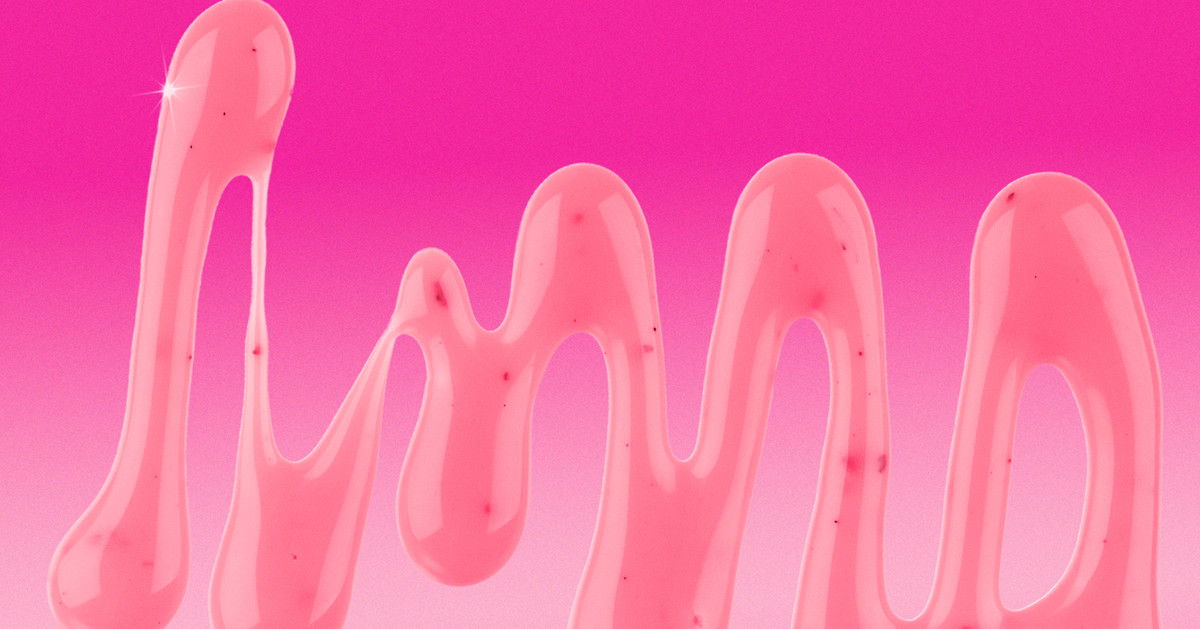
The writer Katy Kelleher claimed Barbie pink as the “color of the year” in Refinery29 earlier this month, citing its appearance in Greta Gerwig’s in-progress Barbie movie and Valentino’s recent runway show and TikTok’s popular bimbocore subgenre. But what this trend piece didn’t see coming? The “Pink Sauce,” which started to really squeeze, drip, and even fizz its way all over TikTok over the past two weeks.
For the non-TikTok savvy, a primer: The Pink Sauce is a condiment made by a TikToker who goes by “Chef Pii” and who is a private chef in Miami. It is, according to its website, made up of “water, sunflower seed oil, raw honey, distilled vingar [sic], garlic, pitaya, pink himalayan sea salt,” and “less than 2 percent of: dried spices, lemon juice, milk, citric acid,” with the pitaya accounting for its pink color. Its virality quickly gave way to drama. Chef Pii refused to explain what the sauce tasted like, the color of the sauce varied depending on the video, people pointed out major safety problems (despite containing milk, bottles of sauce shipped unrefrigerated), and all of that has resulted in a big old mess. (Chef Pii is reportedly dealing with the FDA and at least one fake death attributed to her product.)
But all of that’s been covered plenty, so let’s go back to why Pink Sauce popped off in the first place — the color, obviously. As pink is not terribly common in the realm of edible goods, at least not since Parkay discontinued its “Shocking Pink” squeezable margarine, we asked color experts to weigh in: Why is the Pink Sauce so appealing, and why exactly were we primed for this moment? Because the color of the Pink Sauce varies from bottle to bottle, we discussed two versions: the paler sauce that made it into people’s homes, and the brighter bottle that appeared in Chef Pii’s early promotion.
:no_upscale()/cdn.vox-cdn.com/uploads/chorus_asset/file/23910377/Image_from_iOS__8_.jpg)
:no_upscale()/cdn.vox-cdn.com/uploads/chorus_asset/file/23910378/Image_from_iOS__9_.jpg)
When it comes to that brighter version, it’s “like a Pepto Bismol but fun and playful and bright and a little bit more jarring,” says Natalie Ebel, co-founder of the paint brand Backdrop, which has 10 pinks in its roster. Especially since 2020, these pinks have been popular, she says. “There’s a sense of playfulness and also being a little provocative like: Is this allowed? Can I do it?” she says of these shades. Indeed, the Pink Sauce is nothing if not a little provocative. “It’s like a more rebellious version of that cute, approachable, soft, millennial pink — we’re coming back and breaking the rules and I think that that’s what this color really screams,” she says.
Véronique Hyland, fashion features director at Elle and author of the recent book Dress Code, also sees this shade trending. Hyland notably coined the term “millennial pink” in the Cut in 2016, but unlike that desaturated pink, this one is “much more unapologetic, Elle Woods, Barbie, Angelyne — all of these associations.” That this color has popped up in food is a bit of a surprise. “Food is not typically this color unless it’s very highly processed, so you immediately think, What’s in this? It sounds like some of the controversy hinges on what is in this,” Hyland says.
Of the two, the paler version certainly reads as more approachable, especially when it comes to being edible. “It looks like a melted strawberry ice cream,” Ebel says. While Hyland notes she was referring to a more desaturated pink when she offhandedly identified millennial pink, the color of this Pink Sauce is what it has come to mean more broadly. “This is one of the shades that would be considered millennial pink — the more sweet, girly kind of version that’s less in your face than the hot pink,” she says.
Similarly to the bright shade, the appearance of this millennial pink-esque color in this medium is probably why we’re so drawn to the Pink Sauce on our feeds, whether that visual appeal comes out of an initial fascination or repulsion. “I’ve seen in the food world a fair amount in terms of decor, but I don’t know if I’ve seen it so much with food beyond something sweet like a macaron,” says Hyland. “This is supposed to be a savory sauce, so that might be why there’s some of the confusion as well; it looks like something that would be like bubblegum.”
No matter what shade the Pink Sauce is though, it seems safe to conclude that we wouldn’t be talking about it much if it were, say, brown — there’s a reason so many viral foods are rainbow or gold-covered or goth-ed out with activated charcoal. “I don’t think it would be as much a topic of conversation if it were not pink,” says Hyland. “I think the impulses that lead people to question what’s in it might not have been there if it felt like a less unnatural color.”
